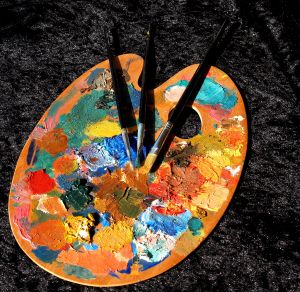The colour of love
The colour of love
The colour of love
-
Hannah
-
Hannah
 One of the elements of my writing that readers most often comment on is the description. I was brought up to be a highly descriptive writer, because I spent so many years immersed in French literature, because writing in English (not my native tongue) demands that I consider carefully vocabulary, and because my favourite poets and writers have always been those who paint vivid pictures of scenes in the reader’s mind. But most of all, I think, because I am drawn to beautiful settings, and when I write about them, I so want to transport the reader to a time and place and allow them to experience what is in my mind.
One of the elements of my writing that readers most often comment on is the description. I was brought up to be a highly descriptive writer, because I spent so many years immersed in French literature, because writing in English (not my native tongue) demands that I consider carefully vocabulary, and because my favourite poets and writers have always been those who paint vivid pictures of scenes in the reader’s mind. But most of all, I think, because I am drawn to beautiful settings, and when I write about them, I so want to transport the reader to a time and place and allow them to experience what is in my mind.
Colour is a key component of description, as any writer will agree. We don’t simply write that the heroine wore a sundress; we write that she wore a sundress the colour of cornflowers that offset the russet highlights in her hair and brought out the fire in her emerald eyes. In my own life, I love to incorporate rich, bright colours where I can – in clothes, in room décor, in garden planting, even in hors d’oeuvres served to guests. Colour is passion and light and life incarnate. It brings joy and warmth. It inspires.
My novel Burning Embers is set in Kenya, and to my mind Africa is synonymous with wonderful, beautiful colours, and so I was careful to weave colour into descriptions wherever possible. For example, here’s a description of Coral’s early reaction to Kenya:
Even with her mind awash with childhood memories, Coral found it difficult for her eyes, accustomed to the more sedate English countryside, to take in all at once the opulence of color, the sense of space, and the profusion of brilliant life. The burning sky seemed too blue, the rich soil too red, and the irrepressible vegetation too green.
When I write, I always have to hand a thesaurus, and I strive to find the perfect word for each description. That often means looking beyond the mundane to words whose meaning and look and sound create the mood I am seeking to convey. For example:
Orchids sprouted from emerald-green grass between banks of compact, glossy thorn bushes and flame-colored reeds. Along the road, acacias, tamarind, frangipani, and purple jacarandas thrust their flowering branches into the never-ending, azure sky.
Of course, because Burning Embers is a fiery, passionate love story set in a hot and sultry country, the colours red and pink feature prominently (take the name of the heroine, Coral, for instance), but these are offset by the green of the verdant vegetation all around and the cooling, calming blues of the sea and the sky.
I have always believed a strong link exists between all art forms, and that the best writing is a kind of painting of words. Painting is a theme in the book – Rafe is a talented artist – and as I wrote I found myself considering often the connection between the colourful setting and the artist’s brushstroke:
With amazement and wonder, she watched multicolored sea creatures nibble at the reefs, schools of brightly striped angelfish and others wildly spotted or recklessly patterned, swimming among vivid anemones and striking coral bouquets as if straight out of an artist’s canvas.
The red of the loose, sandy soil and the green of the long, spiky leaves set under the azure-blue sky were like a vibrant painting.
Were I to commission an artist to create a painting to encapsulate Burning Embers (now there’s a thought!) I would be expecting above all else bold, stirring colour. Because colour is such a key part of the romantic atmosphere.
To close, I leave you with a beautiful song by Celine Dion called ‘The Color of My Love’, which beautifully conveys that special relationship between love and art and colour.